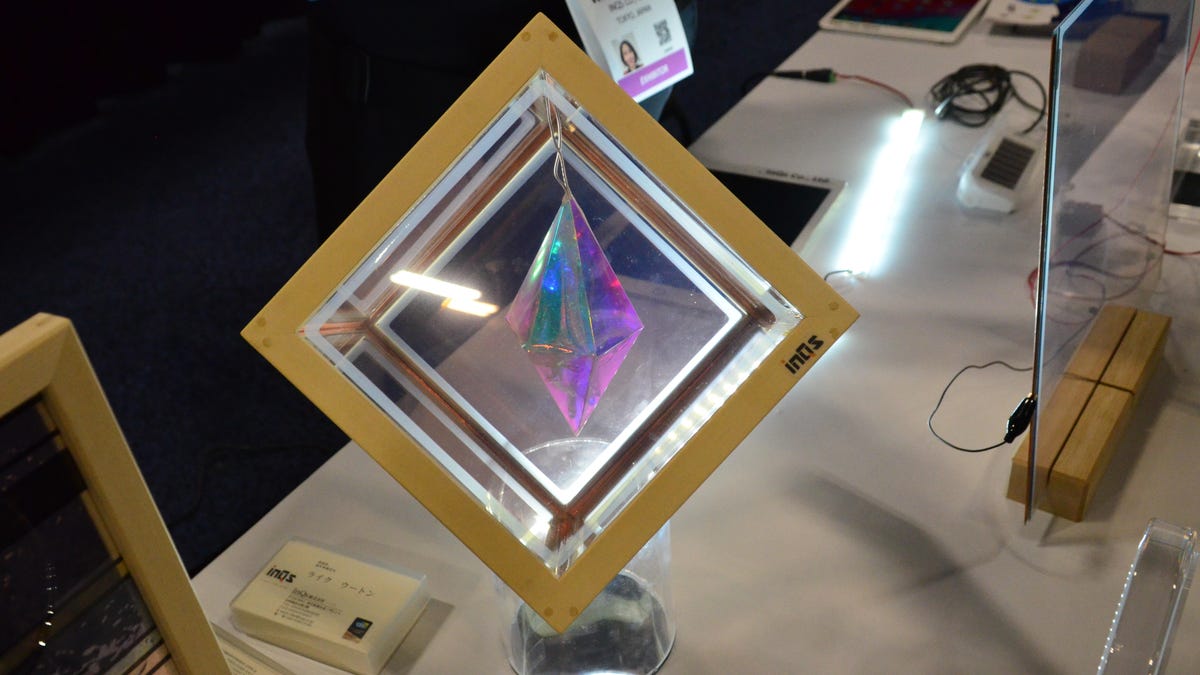That Stained Glass Window Art? Yeah, It's a Solar Panel
At CES 2024, we saw new solar panel technology that rethinks traditional bulky black solar tech.

Think you know what solar panels look like? This thing is capturing the energy of light.
A stained glass solar window on the floor of a CES 2024 press event was more than meets the eye. I was looking not just at an art object, but a solar panel capable of turning sunlight energy into power that didn't also look like a giant, unsightly black box. Bulky traditional solar panels get a bad rap, but solar is being updated and reimagined (like other energy tech revealed at CES).
For example, I saw a gem of silicon quartz that powered its own display with the ultraviolet and infrared light it absorbed. It was everything but boring. The gem was one of a few objects displayed by inQs, a Japanese company promoting its SQPV transparent solar technology.
At center stage was a seemingly ordinary pane of glass with copper lining the sides. Attached to the copper were alligator clips wired to a small fan, which spun steadily. The energy all came from the lights around that glass pane -- the tube lights mounted high on the ceiling of this ballroom in Las Vegas' Mandalay Bay resort and a light bar the company brought to give some extra oomph.
Can solar panels save you money?
Interested in understanding the impact solar can have on your home? Enter some basic information below, and we’ll instantly provide a free estimate of your energy savings.
Colored glass, too, such as the stained glass window I saw, can also operate as a solar panel.
The technology is fairly simple. Instead of using opaque black or blue cells of silicon to catch light energy and turn it into electrons that can run machines, it uses transparent silicon quartz.
Transparent solar panels are an emerging technology, with other companies developing coatings for windows that can capture some of the light spectrum and turn it into electricity.
The key to transparent solar tech is that it doesn't capture the energy from the visible light spectrum. Generally, that means it harnesses ultraviolet and infrared light, allowing the rest to pass through.
The glass from inQs is quite simple, according to Rike Wootten, the company's chief international officer.
"The product itself inside, everything in here is made of very, very easy to find materials," he told CNET. There are no rare earth metals, he said, and the pane itself could be easily and safely disposed of. That's in contrast to conventional solar panels, which can be difficult to recycle because of the materials they use.
Right now inQs is manufacturing this glass at a plant in Tokyo, and the glass is only available in Japan.



